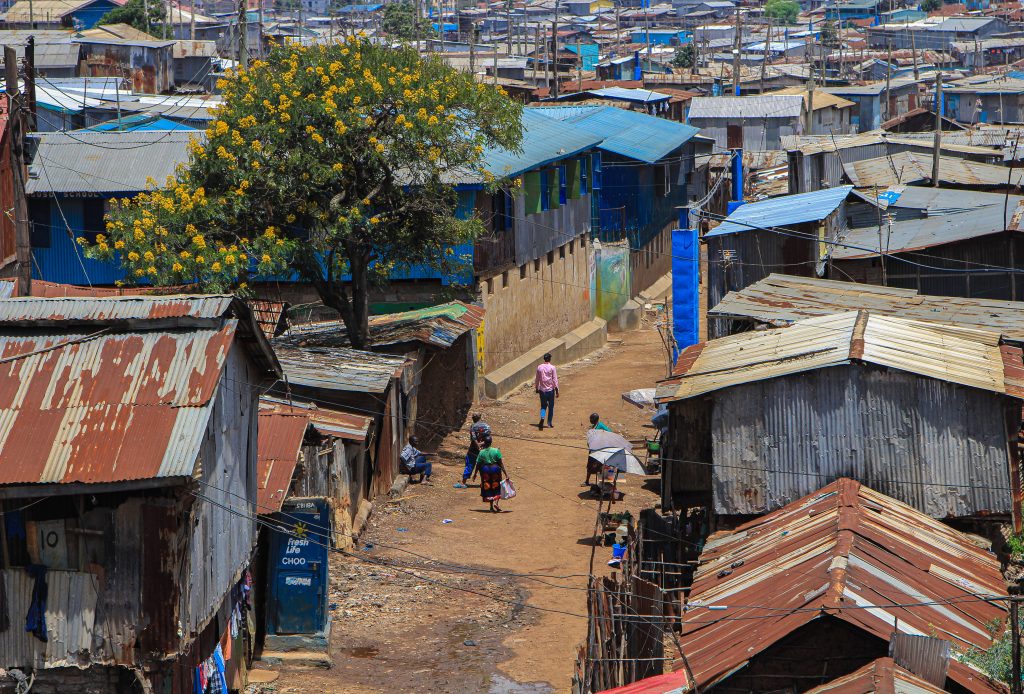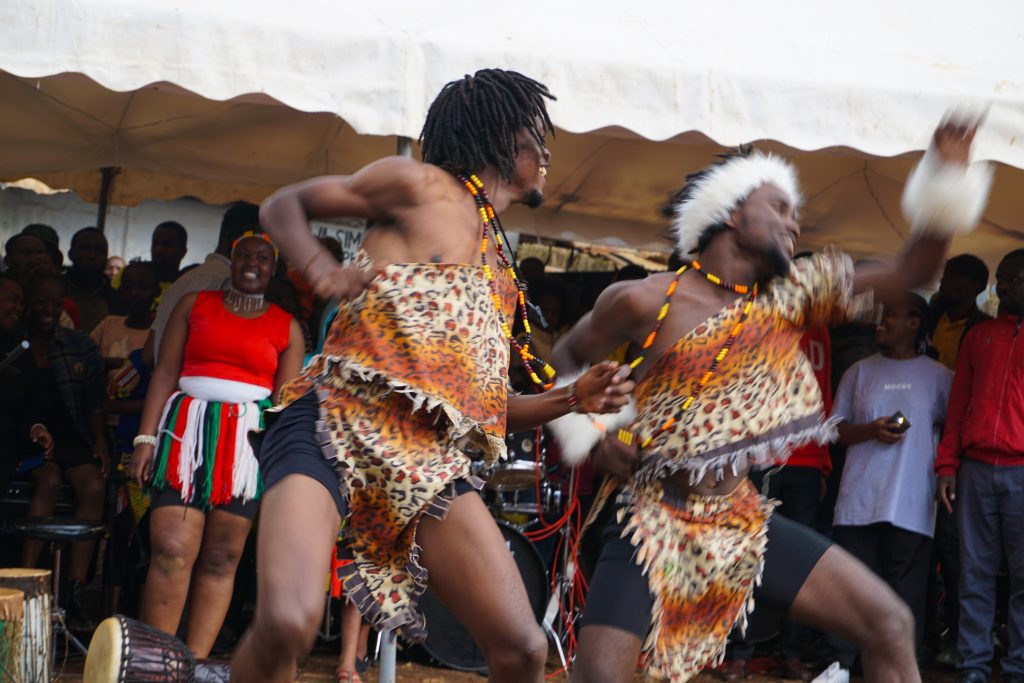KENYA
Journey of the senses and contrasts
80 SHILLINGS INTERLUDE
I clench my fists tightly, repress the emotional collapse, no escape route that offers the intimate spendability of this unexpected weakness, and after a few moments the tears come.
“Lara, Nicole,” I stammer, shaking off the drips and swallowing.
“What's happening? What's wrong?” they rush to ask with haste and bewilderment.

KARIBU NAIROBI
We have arrived in Kenya, arriving at night at the airport of the capital, Nairobi. We negotiate a ride to the address of Carlotta, a friend who will host us for a few days. The rain is pouring down heavily, it strikes 4 in the morning, yet the streets are swarming with people chasing each other at a brisk pace in the same direction,
“Where is everyone going? Why? What’s going on?” I hasten to ask the taxi driver.
“It’s raining, it’s raining heavily,” I repeat out loud.
“People are going to work, to Nairobi city center.”
Silence falls and my gaze returns to scrutinize the outside: sinuous shapes that undulate in the spherical projection of the drops clinging to the window. The enthusiasm is lulled by the tiredness of the journey and by the ambiguity of these nuances in the darkness of the night.

VIEW: “IF YOU LIKE IT, CROWN IT”
Carlotta has already organized our stay in Nairobi. The movements are planned, the cultural approach is respectful, the negotiations are balanced and the concessions are so fluid that they are imperceptible. We have the pleasure of involving the senses in the contemplation of the place and its inhabitants.
The imposing skyscrapers of the Central Business District (CBD) stand as sentinels of Western progress: wide and orderly streets, luxurious shop windows, elegant figures of businessmen and women compose a picture of efficiency and prosperity. The deep socioeconomic inequalities of Nairobi become glaring as soon as you leave the center: structures still under construction, grassy clearings stained by masses of plastic, glass and waste that timidly reflect the colors of the earth, the cloudy sky and the air full of dust and thick with smoke.
The shacks proliferate along the edge of the road, with uncertain and lopsided profiles. The anthropic chaos is tangible: busy people transporting all sorts of goods, others flattened in idleness and discussions on the edges of the road, in the shade of tents at the foot of sidewalks. Along the road, high boundary walls on which a provocative sign stands out: “If you like it, Crown it”.
I remain perplexed: an invitation to Western models to bring the opulence of the center to the peripheries? The city itself seems like a battlefield between the desire for progress and the reality of social inequality, a place where every corner tells a story of ambition and contrast.


SMELL: RAW REALITIES AND PENETRATING ODORS IN KIBERA
We arrive in Kibera, one of the largest slums in Kenya. Carlotta, who has spent months volunteering there, guides us to the center Kibera Creative Arts (KiCA). His familiarity with the place is evident and he introduces us to his closest friends: Philip, the founder of the association, Leonard, the talented dancer, Geoffrey, and Erik Babake, the most enthusiastic and funniest of the group.
Their welcome is warm and thoughtful. We quickly realize that our presence in the slum is not customary. Tourism is not well regarded and the community allows strangers access only if accompanied by a local. This iron surveillance is new to us and oppresses me a bit; never before have I felt so limited in my freedom of travel and exploration.
As we walk through the shantytowns, a pungent, almost penetrating smell pervades us: the garbage-filled canals that run along the sides of the streets emit an acrid stench, a mix of rot and human waste. The air is filled with the smell of diesel from the motorbikes that incessantly pass by, mixed with the aroma of fried food from the kiosks. The houses are built of sheet metal and mud, with plastic or metal roofs that try to resist the rain. The average cost of a house is about 3,000 Kenyan shillings a month (about 25 euros). Services are scarce: water is rationed and electricity intermittent. Compared to central Nairobi, where an apartment can easily cost 50,000 shillings (about 400 euros), Kibera is a world apart. Many residents leave at dawn to work in central Nairobi, working more than 12 hours a day to earn enough to support their families. Most do not have access to adequate medical care; approximately 14% of Kibera's population is affected by HIV/AIDS. Schooling is another serious problem: only 50% of children complete primary school. The lack of educational and employment opportunities pushes many young people towards crime and drug and alcohol abuse.
This is why it was born KiCA. “We want to help the population, especially the young people, to redeem themselves, to support them and make them dream.” This spirit of solidarity and generosity, which pervades every corner of KiCA, makes us reflect on what it truly means to live with, and for, the community.
How does one find purpose in life amidst such adversity? Community belonging, perhaps?
“Life is hard here, but people always smile.”

HEARING: COCKTAIL EFFECT AND TEARS
Nairobi is a city that screams and we want to escape to Namanga, on the border between Kenya and Tanzania, to visit Amboseli National Park and admire Kilimanjaro. We wait at the matatu station, the characteristic Kenyan minibuses. These are the places of maximum agitation and chaos: men shouting and negotiating frantically to attract passengers. The sonic frenzy around me becomes unbearable: sirens, announcements shouted from microphones, radios at full blast and an incessant robotic jingle of some toy of street vendors penetrate my hearing.
I sit waiting in an endless wait, on my right a robust man with a sweet and slightly naive face but his presence emanates a reassuring tranquility. The driver approaches to collect the money and Lara begins the energetic bargaining. I am silently called back by my neighbor: he furtively shows me his ticket with the price: 80 SHELLINI (50 cents), he winks at me and quickly puts it back in his pocket. His small gesture of complicity surprises me and, for the first time, I feel my defenses lowered. I tell Lara and I withdraw into myself and unexpectedly cry, I am moved by the simple and brotherly gesture, I no longer feel like a stranger.
Traveling inevitably involves colliding with the different and the unknown, dealing with adaptation and stress. But in the end, through these clashes and discomforts, one comes to the realization that the new and the different, while hard and scary, are the beginning of adaptation.


FLAVOUR: MILK AND HONEY
We arrived in Namanga, a small village on the edge of Amboseli Park, late at night, after hours and hours on bumpy roads, crammed into crowded and suffocating vehicles. The constant warnings not to go out alone after dark echoed in our minds as we wandered in search of our accommodation. A young woman with a radiant smile comes towards us: “Here you are!” she exclaims, as if she had been waiting for us forever. She leads us into their large family home, where different generations live together in harmony. The children play in the central courtyard, while the mothers are perched on chairs and watch over them with a watchful eye. From the kitchen, Big Mama appears, an imposing woman with a protective spirit, wearing a loose flowered dress, with dark curly hair and heterochromatic eyes.
“How are you girls?” he asks us with a reassuring smile.
“Tired, hungry and a little disoriented,” we reply, trying not to sound too desperate.
Big Mama nods understandingly. “Don’t worry, you’re home now.”
After listening to us tell our adventures, he organized everything for us: from the hot meal to planning our trip to Amboseli for the next day. With natural authority, he gave orders to the family members, making us finally feel safe.
Before we go to bed, she offers us warm milk with honey: an aromatic and sweet taste that evokes familiar and protective sensations. Nicole is transported into the memory of her grandmother and I am wrapped in a maternal embrace.
I reflect on the hospitality extended to us by these extraordinary women. This journey led us to interview many women, delving into the topic of gender inequality and the challenges faced in Kenya. The 2021 Gender Development Index for Kenya was 0.753, highlighting women’s limited access to resources and opportunities compared to men. Only 49% of adult women participate in the labor market, compared to 77% of men. Access to higher education remains problematic, limiting girls’ career prospects, compounded by traditional patriarchal pressures, which bind them to arranged marriages and careers and occupations chosen by the family.
Big Mama embodied the heart of the family. In that house, surrounded by the affection and protection of the women of Namanga, we felt truly integrated. Their warmth and care redeemed our spirit, infusing us with new energy to continue the journey.

TOUCH: AN EXPRESSION OF BELONGING
The last days of our trip and we head towards Mombasa and then Watamu. Once again, numerous public transport journeys await us and a train – yes, the only one in all of Kenya – so unique that it deserves a station that looks more like a prestigious international airport. It is a journey that requires perfect timetables, connections played on the edge of minutes; a feat that, by Kenyan standards, would seem unachievable, let alone for three tourists. And yet, finally, I begin to perceive us as present, aware, safe, uninhibited, FREE. I think about it intensely as I watch Lara and Nicole move with ease through the streets of yet another matatu station. Now I recognize her: Lara speaks calmly with the drivers of the vehicles, the ones we feared so much a few days before, explores, stops to familiarize herself with the children and women, takes photos with due precautions. We are FREE, I still think.
Returning to Nairobi at night no longer scares us. We know what to do. The last dinner crowns the whole experience. A party venue, a soloist strumming and singing reggae music with a smile plastered on his face that seems frozen in facial paralysis. Grilled lamb chops, ugali, sukuma wiki, nyama choma. We are relaxed, happy: “I don’t want to leave,” I say, “I’d like to stay a little longer.” Never before had I experienced such a paradox: the first impact was hard on us, it was hard even for three adventurers like us, but it was worth it.
We have understood that respect and allowing time for adaptation is essential, that allowing ourselves to be pervaded by the different is fundamental, and that fear and stress are indispensable components of this process. These emotions, often feared and avoided, are actually the cornerstones of personal growth and true transformation. But then, why do we forget this so easily? Why do we avoid these sensations that define us as human beings and push us towards new heights of awareness? Why do we flee precisely that which, while exposing us, allows us to rediscover our inner strength?
Article and photos by Nicoleta Anca Milos